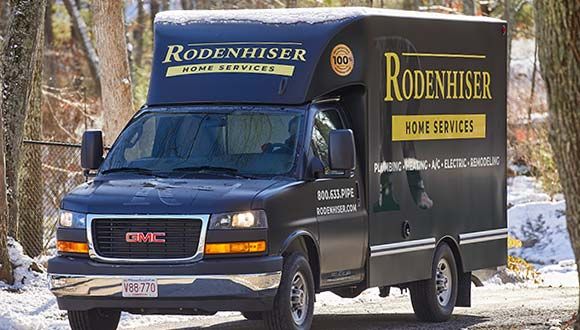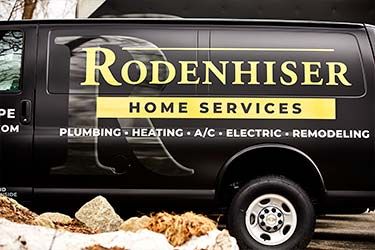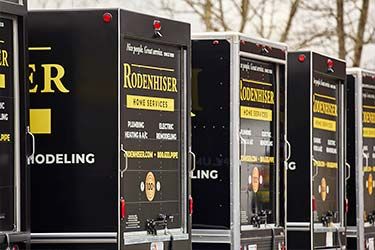



Zoning Systems Offer Low-Cost Solution to Home Comfort Problems
How can you tell if your home could benefit from a zoning system? The comfort level of home occupants and your energy bills are just two ways you can answer that question.

Hot and cold zones in your home, as well as rising energy costs, offer good evidence when assessing the performance level of your HVAC system. However, it may not be cost effective to replace the system. That’s where zoning systems enter the equation, addressing comfort problems and driving energy costs down.
What are zoning systems?
Zoning systems utilize the existing HVAC system (furnace and/or air conditioner) and ductwork already in the home to take home heating and cooling up a notch. Your contractor will group the home into zones with the same heating/cooling load. Retrofitting ducts with motorized dampers allows for precise heating and cooling. Individual thermostats optimally located in each zone control the dampers, which open to allow conditioned air into the zone and close when the zone reaches the preset temperature demand. That means spaces with higher heating/cooling loads can continue to receive conditioned air, without over-conditioning areas with lesser heating/cooling needs..
When should you employ a zoning system?
The even distribution of heating and cooling through zoning is uniquely suited to homes that feature:
- Two or more stories, such as a two-story home or a split-level home
- A large open space with ceilings higher than the standard height
- A room with very large windows
- A remodeled attic
- A finished basement
- A finished area over the garage
- An addition to the home, which employs more efficient building materials than the existing home
- A large, rambling floor plan
Home design features like these offer homeowners more space and increase the home’s aesthetic value while making it difficult for a single HVAC system to accommodate the differing heating/cooling loads. Zoning systems resolve the problems inherent to these designs.
Rodenhiser Plumbing, Heating & Air Conditioning provides HVAC services to the Route 495/128 area of Medway MA. Contact us for help resolving comfort problems or when energy costs spiral out of control. We’re happy to discuss solutions, zoning systems and maintenance plans.
Image via Shutterstock.com
Nice people.
Great service.
Since 1928Terms & Conditions | Privacy Policy





Read From Over 14,000 Happy Customers
-
Both Alex and Patrick were knowledgeable, courteous, and professional. They made a change that might have solved the recent problem and have structured a more complete solution. We agreed to this...

-
Mike was thorough, thoughtful and considerate. Covered their shoes before entering, surveyed my issue and provided an explanation of the services and costs. Great Job!

-
Alex did a great job providing an explanation of the services provided and went out of his way to offer assistance/advice on other issues outside of our scheduled maintenance visit.

-
Brian did an excellent job inspecting our 18-year old boiler and replacing some of the accessory hardware that needed it, he also adjusted the outgoing hot water settings for our radiators and...

-
Rodenhiser is my one stop shop!!! They take care of my HVAC, electrical, and plumbing issues & are always helpful addressing any questions I may have about the systems in my house! Everyone...

-
Chris G. and Nick V. showed up bright and early at 8am to fix my water heater issue. They were on time, polite and were able to fix an issue that has been plaguing my house for a good year. They...

Call Rodenhiser at
508-321-3089
Call Rodenhiser at 508-321-3089
When you are looking for plumbing, electrical, heating or air conditioning in the Route 495 / 128 area, you will be delighted that you called Medway MA' trusted choice since 1928.
With a total dedication to professional workmanship and excellent service, discover why families and businesses continue to trust Rodenhiser after generations of service

Trusted Plumbers
Fast, On Time
HVAC Experts
Satisfaction Guaranteed
Expert Electricians
Maintenance Plans
CONTACT RODENHISER TODAY
325 Hopping Brook Rd Holliston MA 01746.
-
Master Plumber: #10961
-
Corporate Plumbing: #2288
-
Master Electrician: #23917A
-
Electrical Business: #4804
-
Master Sheet Metal (Unrestricted): #5867
-
Corporate Sheet Metal: #641
-
Home Improvement Contractor: #188806
*Heating system check terms and conditions: Residential Only. Must reside within our service area. Offer only available to 1 unit per household additional units are at full price. Can not be combined with other offers
*Late Season Special Extra Conditions: Gas Systems only. No Discounts on oil systems. Promotional price limited to one system per home, additional systems will be charged at full price. Residential Systems only. Must reside within our service area. *For EV Charger Offer also: valid only when the system is purchased through Rodenhiser.
















